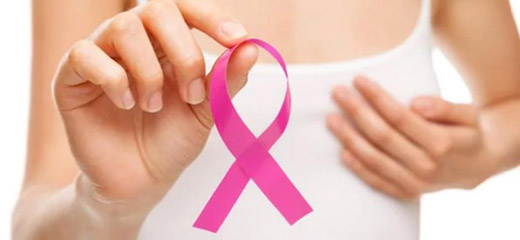
Post treatment monitoring
The goal is to check for recurrence, find and treat side effects of treatment, manage risk factors, and help return to non-medical life.
It involves practitioners who have participated in the treatment (depending on the case: surgeon, plastic surgeon, medical oncologist, radiotherapist oncologist) in tandem with the patient's GP or gynecologist, but also - if necessary - other specialties such as nutritionists, osteoporosis specialists, medical gynecologists, treating physicians, psychologists, sexologists, social workers, etc.
These “actors” can be in the center that treated the patient, but also “in the city”. The monitoring of less severe cases, which are also the most frequent, is nowadays more and more carried out by practitioners and carers located closest to the patients. This maintains the quality of care and greatly improves the ease and comfort of exams.
The “tele-consultation” which developed a lot during the period of confinement induced by the COVID 19 epidemic, will probably be a means of maintaining the link between the healthcare team and the patients, without accumulating travel. >
The basis for surveillance is the combination of clinical examination, mammography and ultrasound.
The rhythm depends on the delay in relation to the treatment and the initial severity. The minimum is to perform a clinical examination every 6 months and an annual mammogram. In most cases, no other specific examination is necessary.
Other exams can be used like breast MRI, CA 153 marker, other imaging tests (CT, PET), depending on the initial characteristics of the cancer and its evolution.
The monitoring methods are defined jointly and are explained during the end-of-treatment consultation. It is personalized, to take into account the disease, its risks, current treatments, medical history and associated pathologies, constraints, etc.
Besides the caregivers who directly carried out the treatment, it is frequent to have recourse to specialists taking charge of:
- Osteoporosis.
Chemotherapy can induce early menopause and certain hormone treatments (aromatase inhibitors) can worsen osteoporosis. A phospho-calcium balance and an osteo-densitometric examination may be necessary. In case of osteopenia or osteoporosis, treatments will be prescribed (physical activity, calcium, vitamin D, biphosphonates, etc.).
- Metabolic disorders.
Hormone treatments can cause or worsen an abnormality in the lipid balance. The attending physician can advise you if necessary (diet, monitoring, treatment).
- Overweight and obesity.
These are risk factors for developing breast cancer and may also affect the risk of recurrence.
Specialists can help you get back to physical activity, change your diet, get treatment.
- Symptoms related to menopause.
Chemotherapy and hormone therapy can cause menopause or make symptoms worse. The problem is that hormone treatments are formally contraindicated in breast cancer, when they are most effective in treating these symptoms. Alternative treatments can then be used.
- Sexuality.
Multiple factors can induce sexual problems during and after treatment. Fatigue, stress, symptoms related to menopause (vaginal dryness in particular), etc. are very frequently observed. Specific care is offered to women who want it.
The use of the arm on the treated side deserves a few words.
For a long time, it was recommended to use the arm as little as possible on the side of the treated breast, to wear nothing, etc. The fear was that lymphedema would appear.
The development of sentinel lymph node replacements and the lesser aggressiveness of current cleaning means that this complication is much less frequent than before.
The recommendations have therefore been reversed. You have to use your arm normally, carry loads of everyday life, play sports, etc. The only attentions are to avoid injuries and therefore to put on protections (clothes, gloves) in the event of risky activity (DIY, gardening); and properly disinfect a wound if it occurs.
Finally, it should not be forgotten that the other screening examinations must be carried out: cervical smear (or HPV test), colonoscopies, etc.




